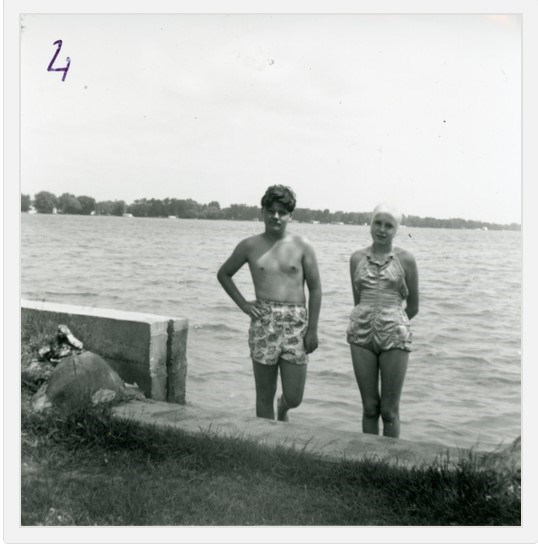Editor's note: To read Part 1, click here.
The slow movement of the creature, which passed them in the water at a distance of some 75 feet, allowed the wide-eyed boaters to have a good look at its features.
Neil Lathangue, operator of the boat, described the being as a serpent of some sort, measuring about 30 to 70 feet long.
“About 10 feet from the head were three or four sets of dorsal fins sticking out of the water about 10 inches. About eight feet behind them, was another set of three or four fins. At the tip of the tail, it left a wake. So it wasn’t something we were dreaming about.”
It is not very often that such an event is reported on, witnessed by so-called credible witnesses who were able to give, in detail, an exceptionally good account of the occurrence.
“There was no sense of fear but, after we realized what it was, we realized that it could demolish or upset the boat. I didn’t see its head which was about water level. It was like a blunt instrument being pushed through the water. “
In fact, like many fascinating tales of the unexplained, this story would most likely have remained as a legend handed down through the Lathangue and Williams families alone. However, Rev. Williams decided that it was something worth sharing more widely and he agreed to be interviewed by a Toronto radio station.
Neil Lathangue’s account of the day, featuring the quotes included here, was shared with the Barrie Examiner in 1976. By that time, tales of this kind had become more acceptable, in fact rather in vogue.
In the minutes immediately following the shocking sighting on Cook’s Bay, Lathangue fired up his boat and headed directly to shore, not in fear for the group’s safety, but to warn other boaters about the thing in the lake.
As the adrenaline dissipated, those on board thought better of that plan.
“As we got closer, we decided not to say anything as other people would think there was something wrong with us.”
If not for Rev. Williams’ radio program disclosure, this story may have been long buried. What the two families experienced on Lake Simcoe in July of 1963 is rare but not unheard of.
Most people local to this area are familiar with the mysterious creature named Kempenfelt Kelly. If such a creature exists, or did exist, I don’t imagine that it would limit its travels solely to the bay that bears its name.
The legends are centuries old. Indigenous People have a name for a mythical animal, Mishipeshu, which translates from Ojibwe into the English term “the Great Lynx” or underwater panther.
In most traditional stories, Mishipeshu is strongly associated with Lake Superior but it would appear that the spirit creature was also believed to be connected to other bodies of water in the Great Lakes region.
In 1890, A.F. Chamberlain, a doctoral student of anthropology, spent a year with the Mississaga people on Scugog Island north of Oshawa, Ont. Chamberlain followed the people in their travels and documented their practices.
During that time, Chamberlain travelled with Niibinaanakwad, an Indigenous man who had been asked to consult on the building of a bridge over an unnamed narrow section of Lake Simcoe. Chamberlain reported that Niibinaanakwad sacrificed tobacco to Mishipeshu as the Mississagas believed the deity lived in the lake.
Myth or truth. Long dead or still hiding somewhere in the weeds of the lake. Kempenfelt Kelly, Beaverton Bessie, Igopogo, or Mishipeshu.
As much I would enjoy learning the truth, the legends and tales of sporadic sightings are tantalizing. It may be that not all mysteries need to be solved.
Each week, the Barrie Historical Archive provides BarrieToday readers with a glimpse of the city’s past. This unique column features photos and stories from years gone by and is sure to appeal to the historian in each of us.



